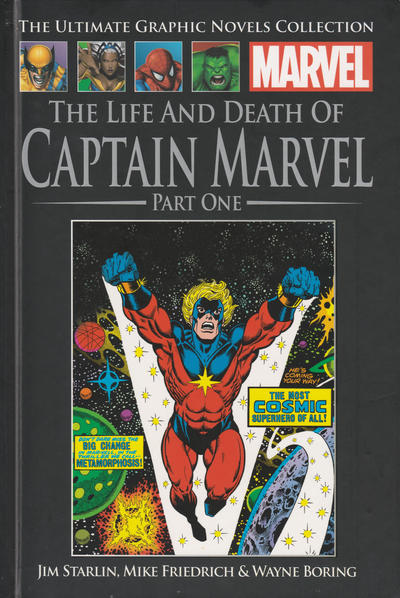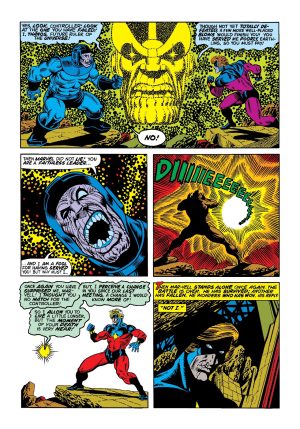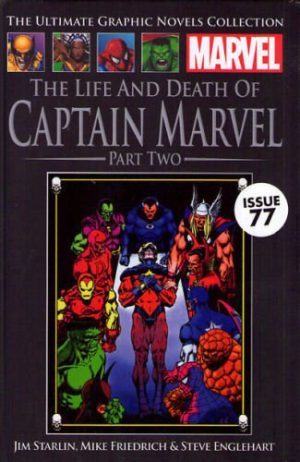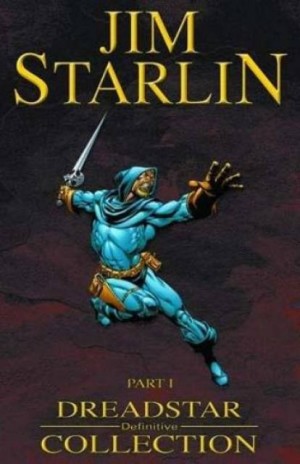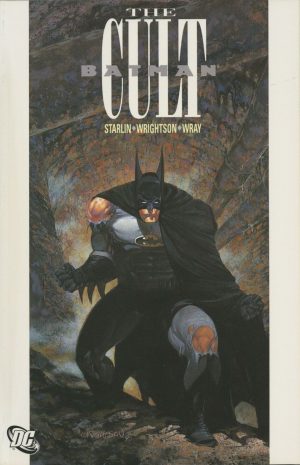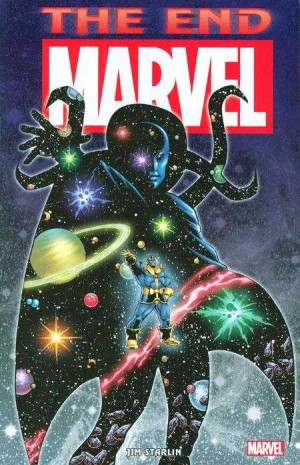Review by Frank Plowright
The short review of Jim Starlin’s early 1970s run on Captain Marvel should acknowledge it being remarkably ambitious work for someone’s earliest material, and that the ambition outstrips the capabilities until Starlin finds his way toward the end. Unfortunately, in these partwork collections that means the better material is largely found in The Life and Death of Captain Marvel Part 2.
No-one really cared about Captain Marvel when Starlin was assigned a comic constantly on the verge of cancellation for a third time. Captain Marvel had been tinkered with by Roy Thomas to provide an updated version of the 1940s Captain Marvel (these days Shazam!), meaning deserting Kree warrior Mar-Vell shared his existence with the human Rick Jones, and only one of them could exist in human form at a time. Starlin kept that inconvenience while also greatly expanding the possibilities of the Marvel Universe.
Until Starlin, a Marvel superhero having a brush with an alien was almost always on home territory. Starlin abolished this unspoken artificial restriction and expanded Captain Marvel’s presence to other planets. He wore his influences on his sleeve, impressed by the power and energy of Jack Kirby’s art, and the grace of Gil Kane, while Kirby’s conceptual vision is also apparent. How Steve Ditko also seeped into the young Starlin’s head isn’t as obvious, but certainly seen in the weirder sections when reality is distorted.
The collection opens with forgettable work by Marv Wolfman and Wayne Boring before moving to an Iron Man story introducing both Drax the Destroyer and Thanos, who required some remedial design work before becoming the familiar intimidating figure. By the time he’s seen again he’s bulked up and no longer wearing the shorts. The Captain Marvel material follows, but it’s raw. Mike Friedrich supplies dialogue for the initial chapters, eventually improving for Starlin completely writing his own material, yet much of what’s supplied here is energetic, but poorly paced, and lacking any compulsive aspects other than the occasional small moment. At the time the novelty was so much of the action occurring away from Earth, but Starlin hadn’t yet refined the idea of the cosmic epic, and what he and other creators later built on these foundations is an improvement.
It’s only the final two chapters where the spirit and energy begin to coalesce into something better. Because he needs a power-up to cope with threats away from Earth Captain Marvel is endowed with cosmic awareness. It’s a vague and wooly concept, but undergoing the process results in some remarkably trippy art, the likes of which hadn’t been seen since Ditko’s triumphs on Doctor Strange. The final chapter sees a newly empowered Captain Marvel finally deal with the Controller, a threat that rumbles on way too long.
While a lot better has been achieved with similar ideas, it’s essential to point out that Starlin paved the way, and that the eight comics supplied in this collection are the first eight comics he produced. Does a similar bold start and upward quality curve apply to any other creator of superhero comics?
This material has been reprinted in numerous formats, but if this hardcover and its sequel aren’t to your taste, the best bet is Captain Marvel: The Complete Collection by Jim Starlin.
